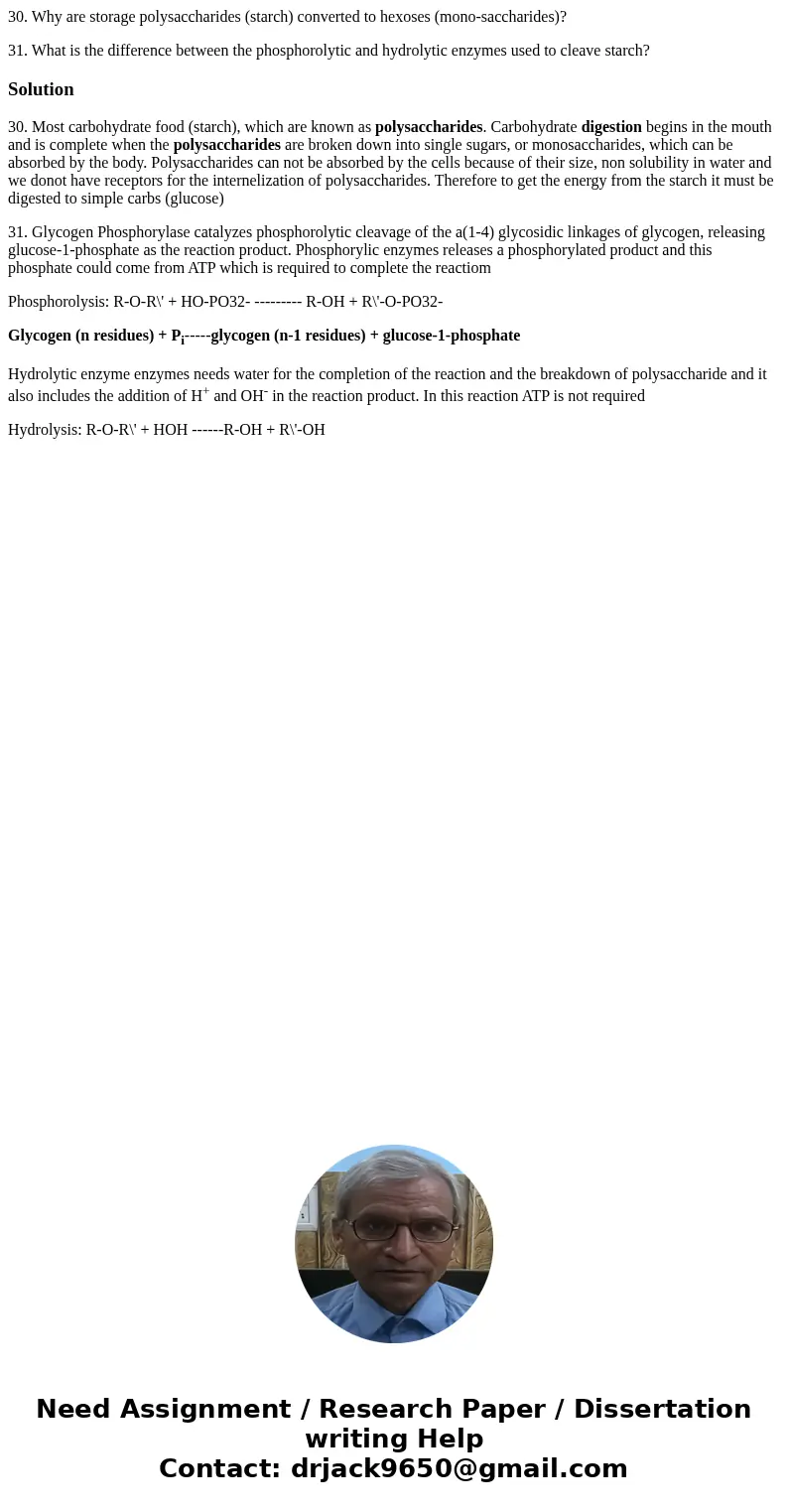30 Why are storage polysaccharides starch converted to hexos
30. Why are storage polysaccharides (starch) converted to hexoses (mono-saccharides)?
31. What is the difference between the phosphorolytic and hydrolytic enzymes used to cleave starch?
Solution
30. Most carbohydrate food (starch), which are known as polysaccharides. Carbohydrate digestion begins in the mouth and is complete when the polysaccharides are broken down into single sugars, or monosaccharides, which can be absorbed by the body. Polysaccharides can not be absorbed by the cells because of their size, non solubility in water and we donot have receptors for the internelization of polysaccharides. Therefore to get the energy from the starch it must be digested to simple carbs (glucose)
31. Glycogen Phosphorylase catalyzes phosphorolytic cleavage of the a(1-4) glycosidic linkages of glycogen, releasing glucose-1-phosphate as the reaction product. Phosphorylic enzymes releases a phosphorylated product and this phosphate could come from ATP which is required to complete the reactiom
Phosphorolysis: R-O-R\' + HO-PO32- --------- R-OH + R\'-O-PO32-
Glycogen (n residues) + Pi-----glycogen (n-1 residues) + glucose-1-phosphate
Hydrolytic enzyme enzymes needs water for the completion of the reaction and the breakdown of polysaccharide and it also includes the addition of H+ and OH- in the reaction product. In this reaction ATP is not required
Hydrolysis: R-O-R\' + HOH ------R-OH + R\'-OH

 Homework Sourse
Homework Sourse